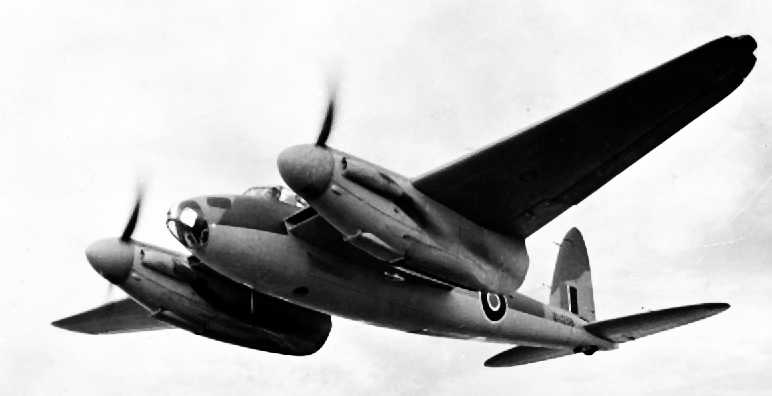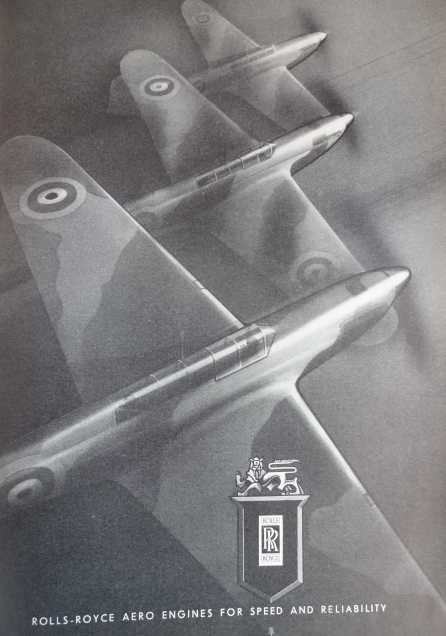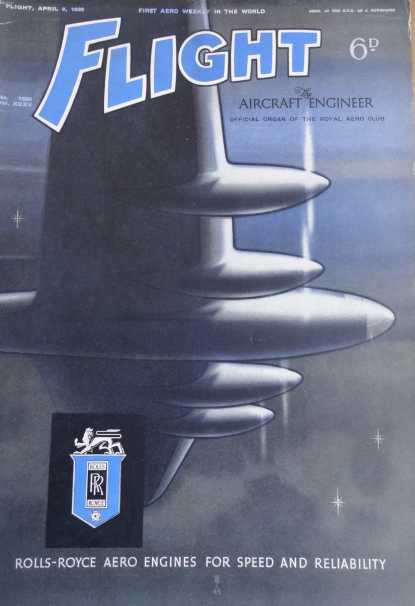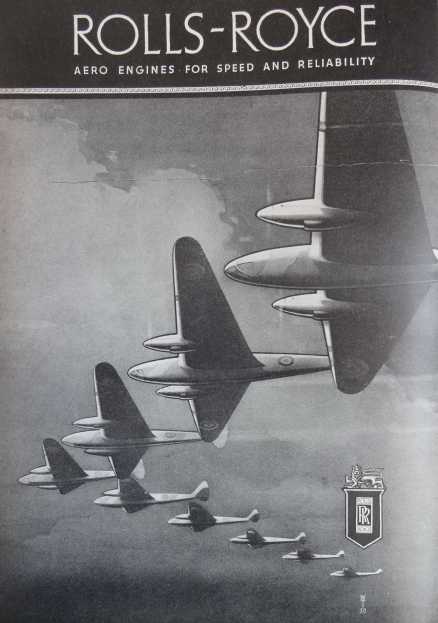Dinger's Aviation Pages
Mosquito Genesis.
A case of life immitating art?
Some thoughts on the origins of the de Havilland DH98 Mosquito.
A case of life immitating art?
Some thoughts on the origins of the de Havilland DH98 Mosquito.

Any investigation of the original design of the famous de Havilland DH98 Mosquito fighter-bomber aircraft of World War two is going to come across at least three narratives. The first, most popular and easily expressed is the "wooden wonder", designed in a few short weeks in Britain's darkest hour. A no-nonsense, supremely fast aircraft, parts for which could be knocked-up in any carpentry workshop. Usually, this simplified description also harks back to the sleek DH88 Comet racer as being its forebear and often gives the impression it was designed against the wishes of the Air-Ministry.
The second narrative is expressed in books that deal with the Mosquito from the point-of-view of the Air Ministry and the RAF. In these, the role of Wilfred Freeman, who held the post of Air Member for Development and Production (AMDP) and who championed the idea of a fast, unarmed bomber, is given pre-eminence.
The third, most technical and longest chronicle is that contained in accounts that come at it from the de Havilland company point of view. These usually start by stressing that de Havilland was not in the habit of making warplanes or tendering for Air Ministry contracts for them. Then they point out that the Mosquito had its earliest beginnings in calls for more use of wood in the construction of British bomber aircraft (these calls were raised by Labour MP Hugh Dalton in the House of Commons in May 1938 ¹). How design studies that replaced the four small Gypsy XII engines of the de Havilland wooden Albatross airliner with two much more powerful Rolls-Royce Merlins did not produce a satisfactory outcome. How then, coming up with a new, smaller design of fuselage and wing powered by two Merlins was seen as a way forward, with a final dispute about fitting some rearward-facing armament being resolved.
I would like to point out yet another element that likely influenced designers and policy-makers in the Air Ministry and aviation industry at the time. The influence would have been subconscious. Anyone who remembers Derren Brown's famous "advertising agency task" (see < this link > for Youtube video) will appreciate the subliminal power of images.
In the late 1930s into 1940 the Rolls-Royce company ran regular ads in the British aeronautical press (principally "Flight" and "The Aeroplane" weekly magazines). These featured highly stylised representations of aircraft. Single-engined, four-engined and TWO-ENGINED....
Here is the single-engined ad.

Here is the four-engined ad.

And here, having more than a passing resemblance to the Mosquito, is the two-engined ad.

Okay, the nose is a little longer and seems to have Heinkel III style glazing, but in overall outline, and with the undoubted characteristics of a bomber with no defensive armament it comes very close to a representation of a Mosquito. What is remarkable is that some sources do claim the initial Mosquito design study did indeed have a glazed nose like the Heinkel 111 (see the wikipedia link below).
So, going back to the Derren Brown advertising agency analogy. Perhaps Rolls-Royce's advertising agency can be said to have had a role in designing the Mosquito? I hope they were well paid; it certainly led to the sale of a lot of Merlin engines!
Notes
¹ Ironically, Hugh Dalton's calls for more use of wood in British bombers were prompted by the belief that the Germans were using wood in their latest designs. The elliptical wings of the Heinkel He 70 "Blitz" single-engined mailplane were made of wood, and when the Heinkel He 111 twin-engined bomber appeared, the British assumed its elliptical wings were also made of wood.
Some further reading on the origin of the Mosquito.
The Wikipedia page is a good place to start - <at this link>
I strongly recommend anyone looking into the origins of the Mosquito to read Chapter 8 "Before The Storm" in "The RAF and Aircraft Design 1923-1939": By Colin Sinnott, published by Frank Cass. ISBN 0 7146 5158 3.
"Wilfred Freeman - The Genius behind Allied Survival and Air Supremacy 1939 to 1940" - By Anthony Furse, published by Spelmount. ISBN 1-86227-079-1
"RAF Bomber Command and its aircraft 1939-1940" by James Goulding & Philip Moyes, published by Ian Allen. ISBN 0 7110 0627 X
"D.H. A History of de Havilland" by C.Martin Sharp, published by Airlife, ISBN 0 906393 20 5
"De Havilland Aircraft Since 1909" - By AJ Jackson, published by Putnam. ISBN 0 370 30022X
Hansard record of Hugh Dalton's speech at <This Link>.
